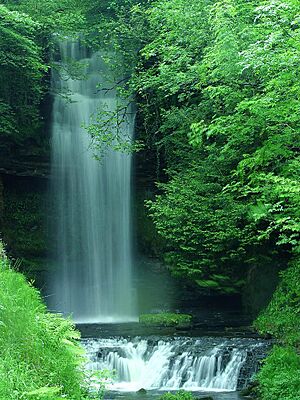The Stolen Child facts for kids
"The Stolen Child" is a famous poem written by William Butler Yeats. It was first published in 1889 in a collection called The Wanderings of Oisin and Other Poems. Many people liked the poem when it came out.
What is "The Stolen Child" About?
This poem tells a magical story about fairies trying to take a human child away from their home. The fairies live in a wild, secret world. They want the child to join them and leave behind the human world.
The poem describes different places where the fairies live:
- A hidden island in a lake, full of berries and cherries.
- Sandy shores lit by moonlight, where they dance all night.
- Pools in the hills near Glen-Car, where water flows and trout swim.
The fairies promise the child a life free from human worries. They say the human world is "full of weeping" and troubles. They invite the child to come "To the waters and the wild" with them.
In the last part of the poem, it seems the child decides to go with the fairies. The poem then describes what the child will miss. They will no longer hear the sounds of home, like calves lowing or the kettle singing. They will also miss seeing the mice around the oatmeal chest. This shows the contrast between the cozy human home and the wild, mysterious fairy world.
Who Was William Butler Yeats?
William Butler Yeats (born in 1865, died in 1939) was a very important Irish poet and writer. He is known for his beautiful poems that often use Irish myths and folklore. He even won the Nobel Prize in Literature in 1923 for his amazing writing. "The Stolen Child" is one of his early poems. It shows his interest in magic and old Irish stories.
When Was It Written?
The poem "The Stolen Child" was first printed in a magazine called the Irish Monthly. This happened in December 1886. Later, it was included in Yeats's first big book of poems in 1889.


